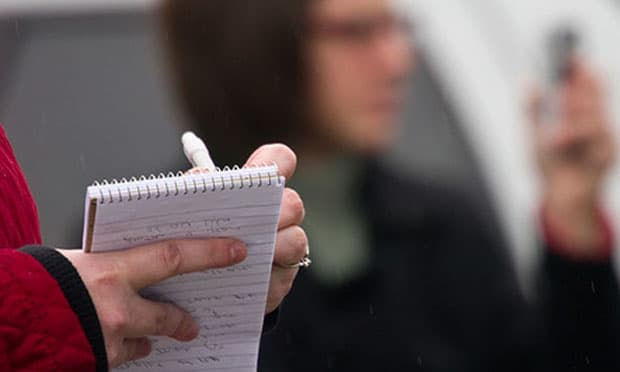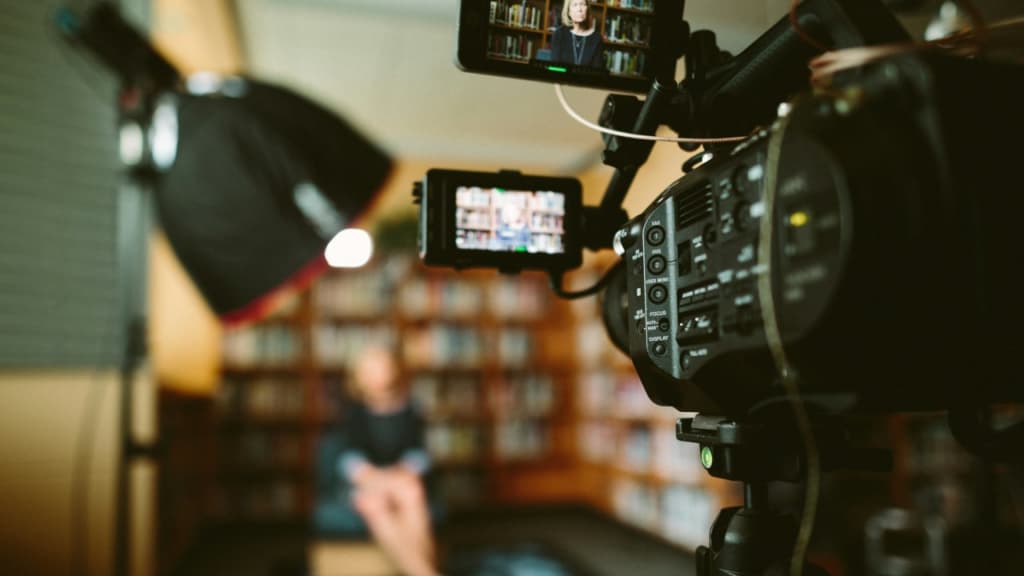Landing that perfect quote or uncovering a story that others missed often comes down to one crucial skill – knowing how to conduct a stellar interview. While 73% of journalists say interviewing is their most important skill, many struggle with getting sources to open up and share meaningful insights. The difference between a mediocre story and front-page material frequently lies in the quality of your interview technique.
Great interviews don’t happen by accident. They’re the result of preparation, skill, and understanding human psychology. Whether you’re a seasoned reporter or just starting your journalism career, mastering these seven techniques will transform your interviews from simple Q&A sessions into powerful storytelling tools.
This guide will walk you through proven methods that veteran journalists use to build trust, extract compelling information, and create the kind of conversations that lead to award-winning stories.
Why Mastering Interview Techniques Matters for Modern Journalists
In today’s fast-paced media landscape, every journalist competes for attention. Sources have limited time and countless media requests flooding their inboxes. The reporters who consistently land the best stories are those who can quickly establish credibility and create an environment where sources feel comfortable sharing their most valuable insights.
Strong interviewing skills directly impact your career trajectory. News directors and editors notice journalists who consistently deliver rich, nuanced stories with memorable quotes. These are the reporters who get assigned to major breaking news, investigative pieces, and high-profile features that can define a career.
Technique 1 – Thorough Pre-Interview Research
Walking into an interview unprepared is like showing up to a job interview without knowing what the company does. Your source will notice immediately, and their respect for you will plummet. Comprehensive research demonstrates professionalism and often unlocks conversation paths you never would have discovered otherwise.
Deep preparation also prevents wasted time on basic questions that could be answered through public records or previous coverage. This allows you to focus on unique angles and fresh perspectives that make your story stand out from the competition.
Key areas to research before any interview:
- Background information about your source and their expertise
- Recent news or developments related to your story topic
- Previous interviews or statements your source has made publicly
- Industry context and relevant statistics or trends
- Potential sensitive topics or controversies to approach carefully
Technique 2 – Crafting Open-Ended Questions
The way you phrase questions determines the quality of answers you receive. Closed questions that can be answered with “yes” or “no” kill conversation momentum and leave you with unusable soundbites. Open-ended questions, on the other hand, encourage sources to elaborate, share personal experiences, and provide the colorful details that bring stories to life.
Effective open-ended questions typically start with words like “how,” “what,” “why,” “describe,” or “tell me about.” These prompts signal to your source that you want more than surface-level information and are genuinely interested in their perspective.
Examples of effective open-ended questions:
- “Walk me through what happened during that meeting”
- “How did this experience change your perspective on the industry”
- “What surprised you most about this situation”
- “Describe the moment you realized things needed to change”

Technique 3 – Active Listening and Follow-Up Questions
Many journalists make the mistake of focusing so intently on their prepared questions that they miss golden opportunities sitting right in front of them. Active listening means staying present in the conversation, picking up on subtle cues, and recognizing when your source mentions something worth exploring further.
The best follow-up questions often come from phrases like “That’s interesting, can you elaborate on that?” or “You mentioned earlier that… can you tell me more about why that matters?” These moments frequently produce the most compelling quotes because you’re diving deeper into topics your source is clearly passionate about.
Developing strong listening skills also helps you identify inconsistencies or gaps in someone’s story. When you notice these moments, gentle follow-up questions can help clarify facts and ensure accuracy in your reporting. Remember, your job isn’t to catch people in lies, but to help them tell their story as clearly and completely as possible.
Technique 4 – Building Rapport and Trust
People share their best stories with journalists they trust. Building rapport isn’t about becoming best friends with your sources, but about creating a professional relationship where they feel heard, respected, and confident that you’ll represent their perspective fairly.
Rapport building starts before you ask your first question. Small talk about their office, a recent accomplishment, or even the weather can help sources relax and view you as a real person rather than just another reporter seeking quotes. This investment in human connection often pays dividends throughout the interview.
Practical rapport-building strategies:
- Arrive a few minutes early and engage in genuine small talk
- Show authentic interest in their work or accomplishments
- Use their name naturally throughout the conversation
- Maintain appropriate eye contact and open body language
- Ask permission before diving into sensitive or difficult topics
Technique 5 – Managing Difficult Interview Situations
Not every interview flows smoothly. Sources might become defensive, evade questions, or even become hostile when discussing controversial topics. How you handle these moments often determines whether you salvage valuable information or walk away empty-handed.
When sources become evasive, acknowledge their concerns directly. Phrases like “I understand this might be sensitive, but can you help me understand your perspective?” often work better than pushing harder with the same question. Sometimes backing off and circling back later in the conversation yields better results.
De-escalation techniques become crucial when interviews turn tense. Lowering your voice, acknowledging their feelings, and reframing questions from different angles can help reset the conversation. Remember, your goal is information, not confrontation. Even when covering difficult topics, maintaining professionalism and respect for your source’s humanity should guide every interaction.
Technique 6 – Effective Note-Taking and Recording Methods
Balancing accurate documentation with maintaining natural conversation flow requires practice and the right tools. Many journalists find success combining digital recording with handwritten notes, using each method to capture different types of information.
Digital recordings provide exact quotes and protect you from accuracy challenges, but they can make sources nervous and create technical failures at the worst possible moments. Always ask permission before recording and have backup plans ready. Hand-written notes, meanwhile, allow you to capture non-verbal cues, your own observations, and key themes that might get lost in hours of recorded audio.
Best practices for interview documentation:
- Test recording equipment before every interview
- Take notes even when recording as a backup measure
- Mark your most important quotes or moments for easy reference
- Document the setting, time, and any relevant context
- Review and organize your notes immediately after the interview
Technique 7 – Post-Interview Follow-Up Strategies
Your job doesn’t end when the interview concludes. Following up professionally and promptly can strengthen source relationships and often leads to additional information that enhances your story. Many sources think of important details or context after the formal interview ends.
Building long-term relationships with reliable sources requires consistent follow-up and professional courtesy. Sending a brief thank-you note, sharing the published story, or checking in periodically when relevant news breaks in their field demonstrates that you value the relationship beyond individual stories.
Essential follow-up actions after every interview:
- Send a thank-you message within 24 hours
- Fact-check any claims or statistics mentioned during the interview
- Reach out with clarifying questions if needed before publication
- Share the final story with your source when it’s published

Common Interview Mistakes to Avoid
Even experienced journalists can fall into habits that undermine their effectiveness. Being aware of these common pitfalls helps you maintain high standards throughout your career.
Most frequent interviewing errors and how to prevent them:
- Interrupting sources when they’re sharing valuable information
- Asking leading questions that push sources toward predetermined answers
- Failing to ask for specific examples or evidence to support claims
- Rushing through interviews without allowing comfortable pauses for reflection
- Forgetting to ask for contact information for additional sources
- Neglecting to verify the spelling of names and titles before leaving
Tools and Resources for Better Interviews
Modern technology offers journalists powerful tools for conducting, recording, and organizing interviews more effectively. While traditional methods still have their place, embracing helpful technology can improve your accuracy and efficiency significantly.
The key is finding tools that enhance rather than complicate your workflow. Start with one or two new tools rather than overhauling your entire process at once. As you become comfortable with new technology, you can gradually incorporate additional resources that fit your specific needs and reporting style.
Recommended apps, software, and equipment:
- Otter.ai or Rev for automated transcription services
- Voice recorder apps with cloud backup capabilities
- Digital notebooks like Notion or Evernote for organizing research
- Quality external microphones for phone or video interviews
- Portable recording devices with long battery life
Final Thoughts
Mastering these seven interviewing techniques transforms you from someone who asks questions into a journalist who uncovers stories. The difference lies in preparation, genuine curiosity about human experiences, and the patience to let conversations develop naturally rather than rushing toward predetermined conclusions.
Remember that interviewing is both an art and a skill that improves with practice. Each conversation teaches you something new about human nature, storytelling, and the craft of journalism. The journalists who consistently produce compelling, accurate, and memorable stories are those who never stop refining their approach to these essential conversations that form the backbone of great reporting.